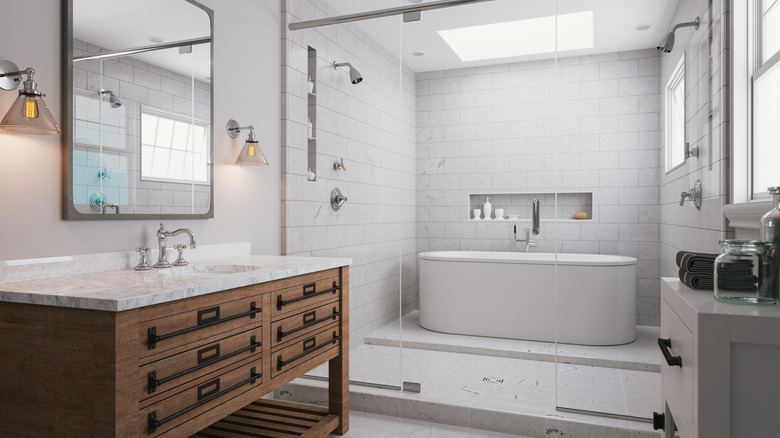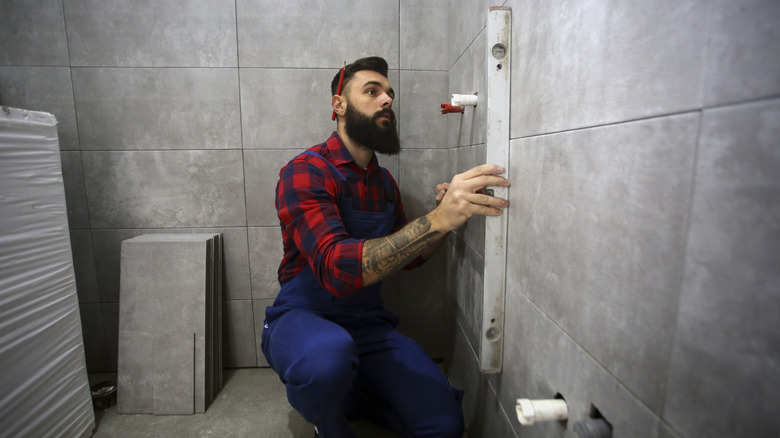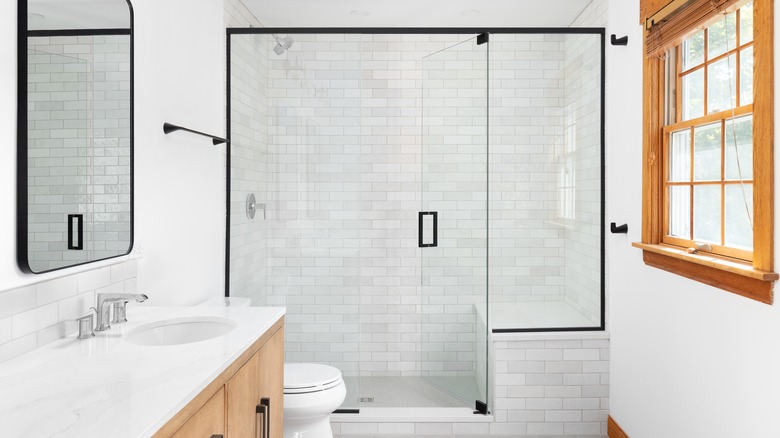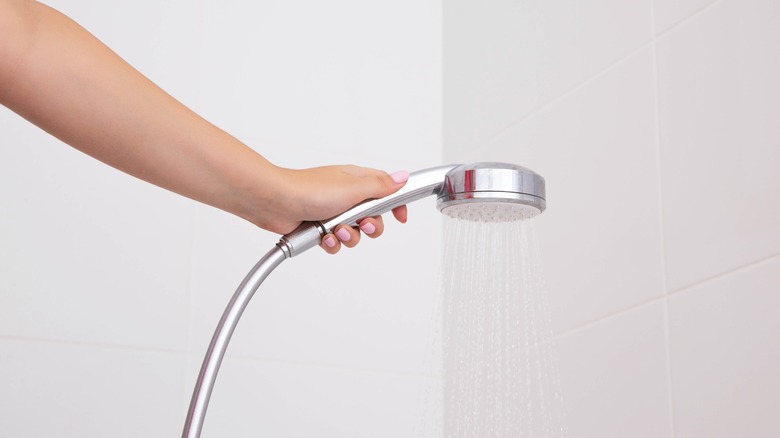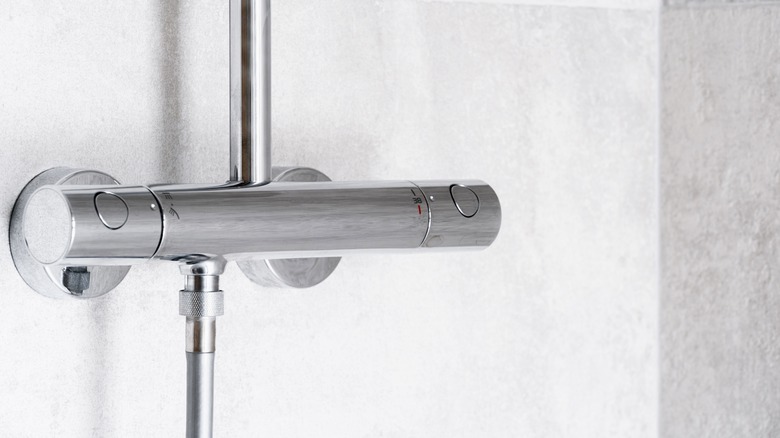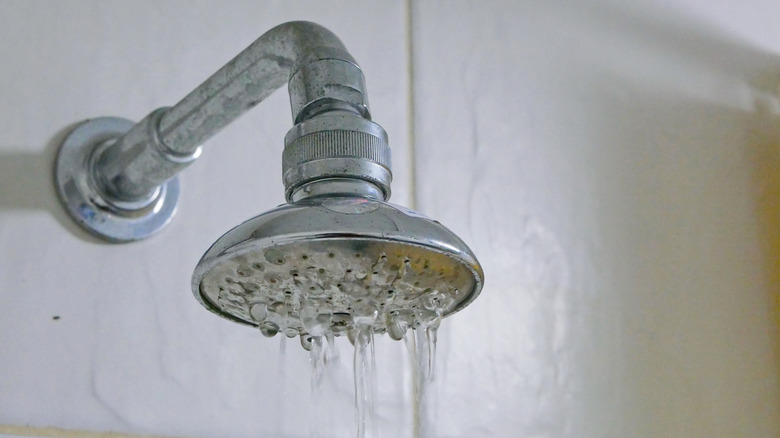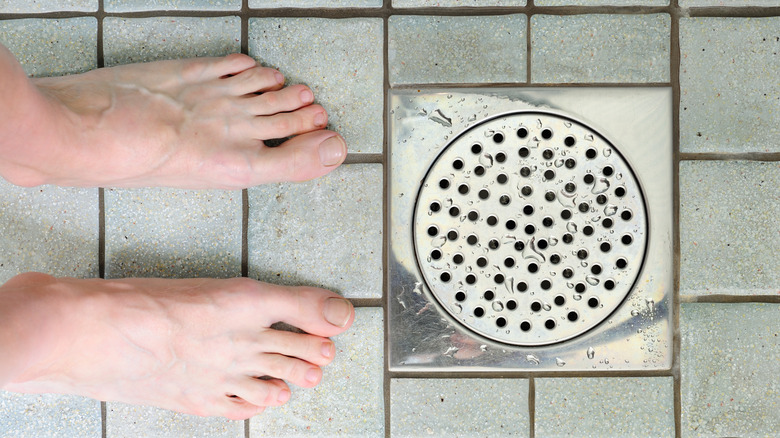What To Know Before Buying A New Shower For Your Bathroom
When you're looking to upgrade your shower, it's crucial to make informed decisions to avoid the pitfalls of a mismatched or all together unwise purchase. Beyond the allure of a sleek design lies the nitty-gritty of technical specs and practical needs. Your shower's performance, your comfort, and the aesthetic appeal of your bathroom are all on the line. There's also the matter of sustainability and cost-effectiveness. What water usage is required to use your new shower, and does that fit within your monthly household budget?
Moreover, when contemplating a new shower, don't just think about the present. Consider your long-term needs and how your choices might adapt to lifestyle changes. Will this shower suit you if you plan to grow your family or if mobility becomes an issue down the line? Engaging with these broader considerations sets the foundation for the detailed choices you'll make later, from accessibility features to water pressure requirements. A shower is more than its spray; it's an investment in your home and wellbeing.
Consider how much space you have
When you're in the market for a new shower, size matters. You need to ensure enough room to move and perform your bathing routine without bumping into walls or fixtures. When you measure your bathroom, do so with a keen eye on how the shower will integrate with the space around it, considering both the practicality of movement inside the shower and its harmony with the rest of the room. With walk-in showers, you have a range of standard sizes at your disposal. Compact options start at 36-inch squares, suitable for smaller bathrooms, while larger dimensions stretch up to 60 inches by 42 inches.
A larger walk-in shower can transform your bathing experience. However, this choice obviously demands more space and may increase water usage. In contrast, smaller showers fit efficiently into most spaces and offer a clean, streamlined look. Determining the best size for a walk-in shower depends on your individual needs. If you're looking for a sweet spot between luxury and practicality, a size around 48 inches by 36 inches is ideal to provide enough room without dominating the bathroom space. You also need to account for the clearance required for shower doors or panels, unless you opt for a doorless design. And remember, local building codes might specify minimum size requirements, so consult them as you plan.
Understand the different shower types
Navigating the myriad of shower options available can feel overwhelming, but it doesn't have to be. First, you need to weigh your space and needs before diving into the specifics. There's a shower type out there that's just right for you, whether it's for a quick refresh, a luxurious soak, or a practical solution to space constraints. You've likely already assessed the space you have. If it's compact, a bathtub/shower combo could be a savvy choice, allowing the luxury of both a bath and shower in one footprint. If you have a bit more room, a stand-up shower or a walk-in shower option might be more appealing.
Now, consider installation and upkeep. Prefabricated showers offer a fuss-free route with their easy installation and simple maintenance, whereas custom builds like neo angle or rectangular showers allow for a tailored bathroom layout. If you're someone who prefers a unique touch and has a budget to match, custom is the way to go. For tighter budgets, prefabricated units are cost-effective, yet still stylish. Then there's the allure of luxury. If your dream bathroom is a place for relaxation and indulgence, a waterfall shower can transport you to a tranquil spa. But remember, such features often require strong water pressure and might increase water consumption.
Who will be using the shower?
When buying a shower, think about who will be using it. If you have young children, a bathtub shower combo might be ideal. Also, accessibility is paramount, especially if you or a family member have limited mobility. Accessible showers embody thoughtful design to accommodate people of varying mobility levels. A key feature is the low threshold, often known as level access, which ensures ease of entry for everyone, including individuals using walkers or wheelchairs. These showers don't conform to a single standard; they are available in numerous sizes and configurations, allowing you to customize the fit and function according to the unique needs of your household. This customization can be particularly advantageous when retrofitting an existing bathroom to make it more accessible.
On the stricter end of the spectrum are ADA-compliant showers, which align with the Americans with Disabilities Act standards. Such showers must have a barrier-free threshold no more than ½ inch high, a non-negotiable feature for wheelchair access. They also come equipped with seats, grab bars in specific locations, and handheld shower heads adjustable from the floor up to 59 inches, ensuring they can be used comfortably in a seated position. Additionally, for a shower to be ADA-compliant, you must be able to use any faucets and controls with one hand without exerting too much strength. The shower's dimensions must also allow a wheelchair to turn freely.
Know your ideal shower head
Shower heads come in various shapes, sizes, and spray patterns. From single-spray to multi-function models, the shower head you choose can enhance your showering experience. First up is the fixed shower head — this is a classic choice that's attached directly to the wall or ceiling. Its pro is its sleek, minimalist design that complements any bathroom without fuss. On the downside, its fixed position limits mobility and might not accommodate every user's height or preference for water angle. Next, consider the handheld shower head, which offers flexibility that a fixed head can't match. You have the freedom to direct the flow wherever you please, making it easier to rinse off, clean the shower area, or bathe pets and children. The flip side? It requires manual operation, which might not be everyone's cup of tea, and it may sometimes lead to more wear and tear on the hose and fittings.
Then there's the rain shower head, which is all about luxury. Positioned overhead, it drenches you in a gentle cascade, mimicking a natural rainfall. However, these shower heads can be more costly to install due to the plumbing requirements. Lastly, there are dual shower heads, which can be installed in multiple numbers around your shower for an all-encompassing experience. These are the epitome of shower indulgence, targeting multiple body areas simultaneously. The downside? They demand significant water output and can be expensive to install and operate, which could increase your water bill and require a more complex plumbing system.
Know the different shower valves
The valve is the heart of the shower, controlling the flow and temperature of the water, so getting it right can make or break your showering experience. Pressure-balancing valves are the go-to for maintaining a steady water temperature. They react to changes in water pressure — for instance, when a toilet flushes — and adjust the mix of hot and cold water accordingly. The pro is that they're relatively inexpensive and straightforward to install. As for the downside, they don't allow for precise temperature control, which can be a drawback if you prefer a specific heat setting. Thermostatic valves, on the other hand, give you pinpoint control over temperature, and they maintain it flawlessly, even if someone starts the dishwasher mid-shower. They're perfect for families with kids or elderly members, as they prevent scalding water from suddenly coming out. However, this type of valve typically comes with a higher price tag and may require professional installation.
Mixing valves are the standard in many showers, simply blending hot and cold water. They're affordable and easy to replace, making them a practical choice. Their con lies in the lack of features; they don't offer much protection against temperature fluctuations. Lastly, transfer valves allow for water to flow through multiple outlets at once. This means you can have your rainfall shower head and body jets on simultaneously for a luxury experience. The trade-off is that they can be complex to install and may require a more extensive plumbing system.
Test your water pressure
Think of proper water pressure as the backbone of your showering experience — it ensures your shower performs at its best. You'll want to start with a clear measurement of your water pressure. Don't hesitate to call in a plumber or use a pressure gauge to get an accurate reading. Knowing whether you're working with high or low pressure sets the stage for selecting a compatible shower.
If your pressure is on the low end, don't worry, you still have options, with pressure shower heads being a top choice. In contrast, if you're looking at a high-pressure reading, you're in an even better place. Higher pressure allows for a wider choice of shower heads, like those luxurious rainfall dual models. But here's a tip: Just because you can go for the most elaborate shower doesn't mean you should ignore the finer details. It's not all about the pressure's intensity; it's also about ensuring your infrastructure can handle it. If you want to boost your water pressure, this calls for robust pipes and a sturdy shower enclosure to prevent potential leaks or damages.
It's also worth considering how high your house sits compared to the water source and the main line's location, as this can impact your water pressure. Additionally, the service line connecting your home to the main water line must be properly sized to meet your demands, or you might find the pressure lacking when you need it most.
Choose a suitable draining mechanism
Drainage is the unsung hero that maintains hygiene by preventing water accumulation, which can lead to mold and mildew growth. It also ensures safety by reducing slip hazards from standing water, while preventing water damage to floors and underlying surfaces. The primary drainage options include linear drains or traditional center drains. A linear drain runs along your shower floor in a slim, rectangular shape. Perfect for installation against the wall or the threshold, it efficiently channels water, all while enabling a single-directional slope for a sleek floor design. For a more classic setup, center shower drains offer versatility in shape and finish, easily blending with any design scheme. They also tend to be more cost-effective.
The compatibility of the drain with your existing plumbing is another critical factor. Some drains may not be suitable for your home's pipework, which could lead to costly adjustments. It's wise to consult with a plumber to understand the constraints and possibilities of your current setup. Materials matter as well. Drains are available in various finishes, such as brushed nickel, chrome, or matte black, giving you the freedom to match them with your other bathroom fixtures. Durability is also key to ensuring your drain remains functional and free from corrosion over time. Local building codes should also guide your selection to ensure your installation is up to standard and won't lead to issues down the line. It's about safety, functionality, and compliance.
Think about your cost and budget
When budgeting for a new shower, how do you ensure you invest wisely? Creating a balance between cost and quality is key, and it starts by acknowledging that the cheapest or priciest options may not always align with your needs. Begin by outlining a budget that realistically reflects what you can afford. On average, installing a new shower costs between $2,000 and $9,000. This range accounts for the wide variety of options available and includes both materials and labor.
At the lower end, prefabricated units are more cost-effective and simpler to install. Higher costs are typically associated with custom work, such as tiled walk-in showers with upscale features like body sprays and multiple shower heads. Other factors that can affect the total cost include the size of the shower, the materials chosen, the complexity of the plumbing work required, and regional labor rates. Always consider getting multiple quotes to ensure competitive pricing and clarify what is included in the installation process.
Maintenance is another cost that shouldn't be overlooked. Some high-tech showers may require more frequent servicing, which can add up over time. A simpler design might offer easier and more cost-effective upkeep. Your time has value as well. If a pricier model reduces cleaning time or lasts longer before needing repairs, this convenience could justify the additional expense. And don't overlook potential savings. Sales and promotions can offer opportunities to purchase premium items at a reduced price.
